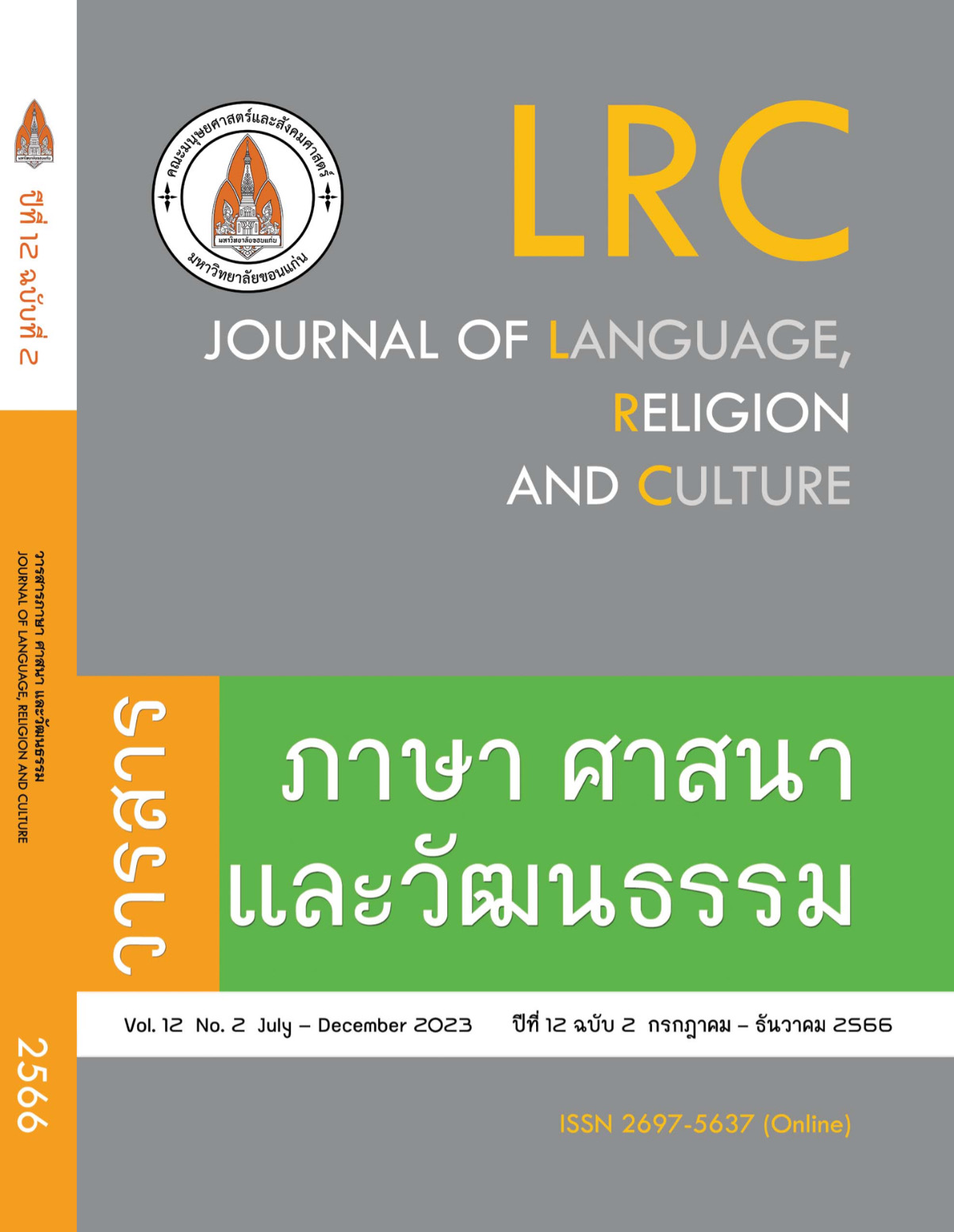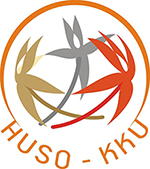The Analysis of Thai Cultural Dimensions and Cultural Transmission Methods in the Thai Language and Culture Textbooks of Korean Students
การวิเคราะห์มิติทางวัฒนธรรมไทยและกลวิธีการถ่ายทอดวัฒนธรรมในแบบเรียนภาษาและวัฒนธรรมไทยของผู้เรียนชาวเกาหลี
Keywords:
Culture dimension, Cultural Transmission Methods, Thai language and culture textbook for Korean learnersAbstract
This article aims to analyze the dimensions of Thai cultural transmission and Cultural Transmission Methods in Thai language learning materials for Korean learners. The researchers defined the scope of the research, which includes three Thai language and Thai cultures textbook versions (A1, A2, and B1) published in the years 2019, 2020, and 2021. The research using cultural dimensions of Moran and cultural transmission methods as conceptual frameworks. The research findings revealed that there are three cultural dimensions present in all three textbooks. First dimension is Product: in this dimension, the cultures identified include Thai cuisine, Thai history, traditional attire, public transportation, and Thai art. Second dimension is Practice: in this dimension, the cultures identified include greetings, Thai customs and holidays, the use of public transportation cards, and traditional Thai sports. The last dimension is Perspective: in this dimension, the cultures identified include Thai religion, the Thai monarchy, the beliefs and values of the Thai people. All three textbooks employ the same method of cultural transmission, which is Culture Maintenance. This approach involves preserving and conveying the values of Thai culture in a manner that encourages conservation for Korean learners. Furthermore, all three textbooks incorporate differences between Thai and Korean cultures to help Korean learners adjust when they have the opportunity to live in a Thai society. Examples of these cultural differences include Thai herbs and vegetables used in Thai cuisine, the public transportation system in Thailand (both in Bangkok and other provinces), greetings, and addressing Thai people, among others.
References
Critical Foreign Languages (CFL) Education Promotion. (2017). Purpose and Background. Retrieved August 13, 2022, from https://cfl.niied.go.kr/main_eng#item1
Kim, H., Lee, J., Han, S., Phatjiraphan, K., Jeon, N., & Lee, M. (2020). 태국어 표준 교재 (A2) ตำรามาตรฐานไทย. Busan: Institute of Critical Foreign Language.
Kim, H., Han, S., Tidarat., Lee, M., & Ong J. (2021). 태국어 표준 교재 (B1) ตำราภาษาไทยฉบับมาตรฐาน. Busan: Institute of Critical Foreign Language.
Lee, B. D. (2013). Teaching the Thai Language in the Republic of Korea: Problems and Recommendations. RUSAMILAE JOURNAL, 34(3), 71–84.
Lee, B. D. (2021). Learning and Teaching in Hankuk University of Foreign Studies, Korea. Humanities and Social Sciences Journal, Chiang Mai Rajabhat University, 2(2), 3–1.
Moran, P.R. (2001). Teaching Culture: Perspective in Practice. Coober Pedy. Heinle & Heinle.
Park, K., Shin, G., & Lee, J. (2019). ตำราภาษาไทยฉบับมาตรฐาน 태국어 표준 교재 (A1). Seoul: Hankuk University of Foreign Studies Publishing Department Knowledge Publishing House (HUINE).
Phemkaesorn, N. (2004). Teaching the Thai language and culture to foreigners. Vannavidas. 4, 268–278.
Phruksawan, B. (1993). Literature and Children. Bangkok: Thaiwattanaphanit.
Sarikbut, K., & Sarikbut, S. (1978). Analysis and Assessment of Learning. Bangkok: Seangrung Publishing.
Tungjaroen. W. (1971). Teaching Approach for Art, Grade 7. Bangkok: Prasarnmit College.
Vejjajiva, W. (2000). Thai-Korean Relations: From the Past and Present to the Future. Thai Journal of East Asian Studies 11(1), 12-38.
Waharak, S. (2015). Cultural Representation in High School English Textbooks and Teachers’ Perceptions. [Unpublished Master dissertation]. Prince of Songkla University.
Wongpinunwatana, W. (2019). Thai Language Usage in Cross-cultural Communication Process of Foreigner Students. JOURNAL OF LANGUAGE, RELIGION AND CULTURE, 8(2), 1–15.
Downloads
Published
How to Cite
Issue
Section
License
Copyright (c) 2023 JOURNAL OF LANGUAGE, RELIGION AND CULTURE

This work is licensed under a Creative Commons Attribution-NonCommercial-NoDerivatives 4.0 International License.







